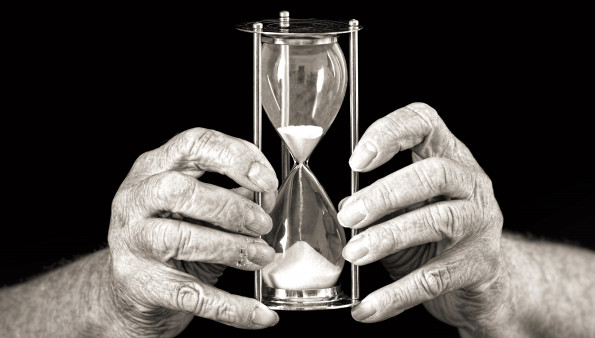Nearly 40% of people with HIV ages 55 and older report that they have at least one unmet need, according to study findings published in the Journal of Acquired Immune Deficiency Syndromes. These ranged from a lack of non-HIV medical or dental care to patient navigation services to help with daily subsistence.
“We found substantial unmet need for ancillary services among diagnosed people with HIV aged ≥55 years, which could jeopardize care and treatment outcomes and negatively affect well-being,” the study authors concluded. “Additional concerted efforts by state and local health departments, federal entities, private providers and community partners are necessary to reduce unmet needs.”
Thanks to effective antiretroviral treatment, people with HIV are living longer, and more than half are age 50 or older in the United States. Like the general population, HIV-positive people are more prone to comorbidities as they age, and they may face challenges such as cognitive decline, reduced mobility and financial instability.
Kathy Byrd, MD, MPH, of the Centers for Disease Control and Prevention (CDC), and colleagues evaluated the need for ancillary services among people with HIV ages 55 and older using data from the Medical Monitoring Project. The project is led by local and state health departments in partnership with the CDC. The randomly selected participants are representative of the national HIV population, including people both in and out of HIV medical care. Data are collected annually from medical records and a survey conducted in person or via telephone.
Ancillary services refer to services and support that are not directly related to HIV treatment but “comprehensively support care engagement and viral suppression,” according to the researchers. As the HIV population ages, the National HIV/AIDS Strategy emphasizes that the health care system must adapt to provide holistic care that addresses both aging-related health and ancillary service needs.
The survey asked questions about three types of ancillary services:
- HIV support services, including medication coverage through the AIDS Drug Assistance Program, adherence support, case management, patient navigation and HIV peer group support.
- Non-HIV medical services, including dental care, mental health services, substance use counseling or treatment and domestic violence services.
- Subsistence services, including transportation, assistance obtaining adequate food and shelter or housing services.
The analysis included data from 2,391 cisgender men and 809 cisgender women collected between June 2019 and May 2021. (Transgender people were excluded due to a small sample size.) About 40% were in the 55 to 59 age range, and the proportion of Black and white participants was similar (42% and 37%). More than half (60%) had public health care coverage such as Medicaid, Medicare or the Ryan White program, 40% had incomes below the federal poverty level, 10% were unemployed and 33% said they were unable to work.
Unmet need was defined as needing but not receiving a service during the past year. Overall, 38% HIV-positive people ages 55 and older had an unmet need for one or more ancillary services, with 8% needing at least two services and 7% needing at least three. Broken down by type of service, 17% had at least one unmet need for HIV support services, 27% for non-HIV medical services and 27% for subsistence services. The most common unmet needs were domestic violence services (43%), HIV peer group support (30%), dental care (24%) and shelter or housing (22%).
“The large proportion of older people with HIV with unmet need for peer group support is concerning given that social conditions such as isolation, stigma and ageism can affect older people with HIV’s engagement in care,” the researchers wrote.
“Also concerning is the high unmet need for patient navigation services,” they added. “As people with HIV age, frequency of comorbidities and medication side effects and interactions increase, making medical care more complicated. Age-related changes, including HIV-associated neurocognitive disorders, can affect an older person’s ability to think or remember, which might negatively affect their ability to navigate the health care system at a time when their medical needs have become more complex.”
Men and women were about equally likely to have unmet needs, but the likelihood was higher for Black and Latino people compared with white people. Interestingly, people 65 and older were less likely to have unmet needs than those ages 55 to 59. More than half of people who reported major depression (72%), anxiety (63%), food insecurity (61%), unstable housing (59%), unemployment (54%) or poor general health (54%) said they had unmet needs. People with a history of incarceration, people living with a disability, those without private health insurance and those with an income less than four times the federal poverty level also had high rates of unmet need. However, these associations were stronger for men than for women.
“Given that unmet need for ancillary services has been associated with poor retention in HIV care, adherence to antiretroviral therapy and viral suppression (with progressively worse outcomes with increasing numbers of unmet needs) and that unmet need amongst these groups is considerable, particular attention to regularly identifying and addressing the service needs of these groups is warranted to improve well-being and optimal care engagement,” the study authors wrote.
“Due to the compounded burden of HIV, comorbidities and geriatric conditions, comprehensive HIV care programs will become increasingly important for older people with HIV because of their potential to address both medical and ancillary service needs through in-house and wrap-around services,” they added.
Click here for more news about HIV and aging.







1 Comment
1 Comment